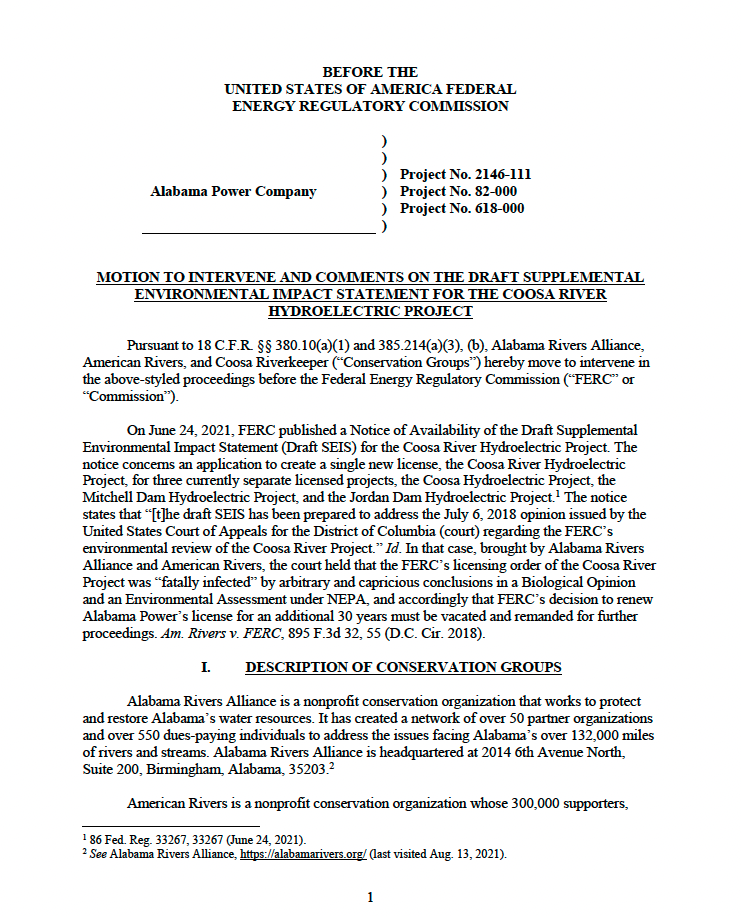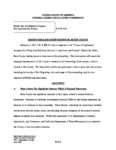Motion to intervene and comments on the Draft Supplemental Environmental Impact Statement for the Coosa River Hydroelectric Project from Alabama Rivers Alliance, American Rivers, and Coosa Riverkeeper. In addition to other arguments, these comments request that FERC examine greenhouse gas emissions from the project and take climate impacts into consideration (see pg 26-30).
“On June 24, 2021, FERC published a Notice of Availability of the Draft Supplemental Environmental Impact Statement (Draft SEIS) for the Coosa River Hydroelectric Project. The notice concerns an application to create a single new license, the Coosa River Hydroelectric Project, for three currently separate licensed projects, the Coosa Hydroelectric Project, the Mitchell Dam Hydroelectric Project, and the Jordan Dam Hydroelectric Project. The notice states that “[t]he draft SEIS has been prepared to address the July 6, 2018 opinion issued by the United States Court of Appeals for the District of Columbia (court) regarding the FERC’s environmental review of the Coosa River Project.” Id. In that case, brought by Alabama Rivers Alliance and American Rivers, the court held that the FERC’s licensing order of the Coosa River Project was “fatally infected” by arbitrary and capricious conclusions in a Biological Opinion and an Environmental Assessment under NEPA, and accordingly that FERC’s decision to renew Alabama Power’s license for an additional 30 years must be vacated and remanded for further proceedings. Am. Rivers v. FERC, 895 F.3d 32, 55 (D.C. Cir. 2018).
GENERAL COMMENTS
In 2018, the United States Court of Appeals for the District of Columbia Circuit held that “[b]ecause the Commission’s environmental review and the biological opinion it relied on were unreasoned and unsupported by substantial evidence, the Commission’s issuance of the license was arbitrary and capricious.” Am. Rivers, 895 F.3d at 37. Three years later, FERC’s issuance is yet again arbitrary and capricious, because the draft SEIS is again unreasoned and unsupported by substantial evidence. In these three years, not one additional scientific study was completed by FERC. It is not sufficient for FERC to change the name from “Environmental Assessment” to “Environmental Impact Statement” without adding additional studies, and attaching those studies as an Appendix for the public to review. The draft SEIS provides hardly any new information to any stakeholder or to FERC, but rather it rehashes and attaches Alabama Power Company’s (APC) filings and then defends the same license that the D.C. Circuit vacated. In many places, the Draft SEIS contradicts itself, claiming in some sections that the dams have caused minimal effects and certain studies are unneeded, but then admitting to the adverse effects elsewhere. Perhaps because FERC’s focus appears to be on finding information that defends the vacated license, rather than finding solutions to the problems outlined by the D.C. Circuit, FERC’s proposed conditions for the license have stayed the same, or even allow more adverse environmental effects, than before the ruling.”


 HRC or member-contributed
HRC or member-contributed